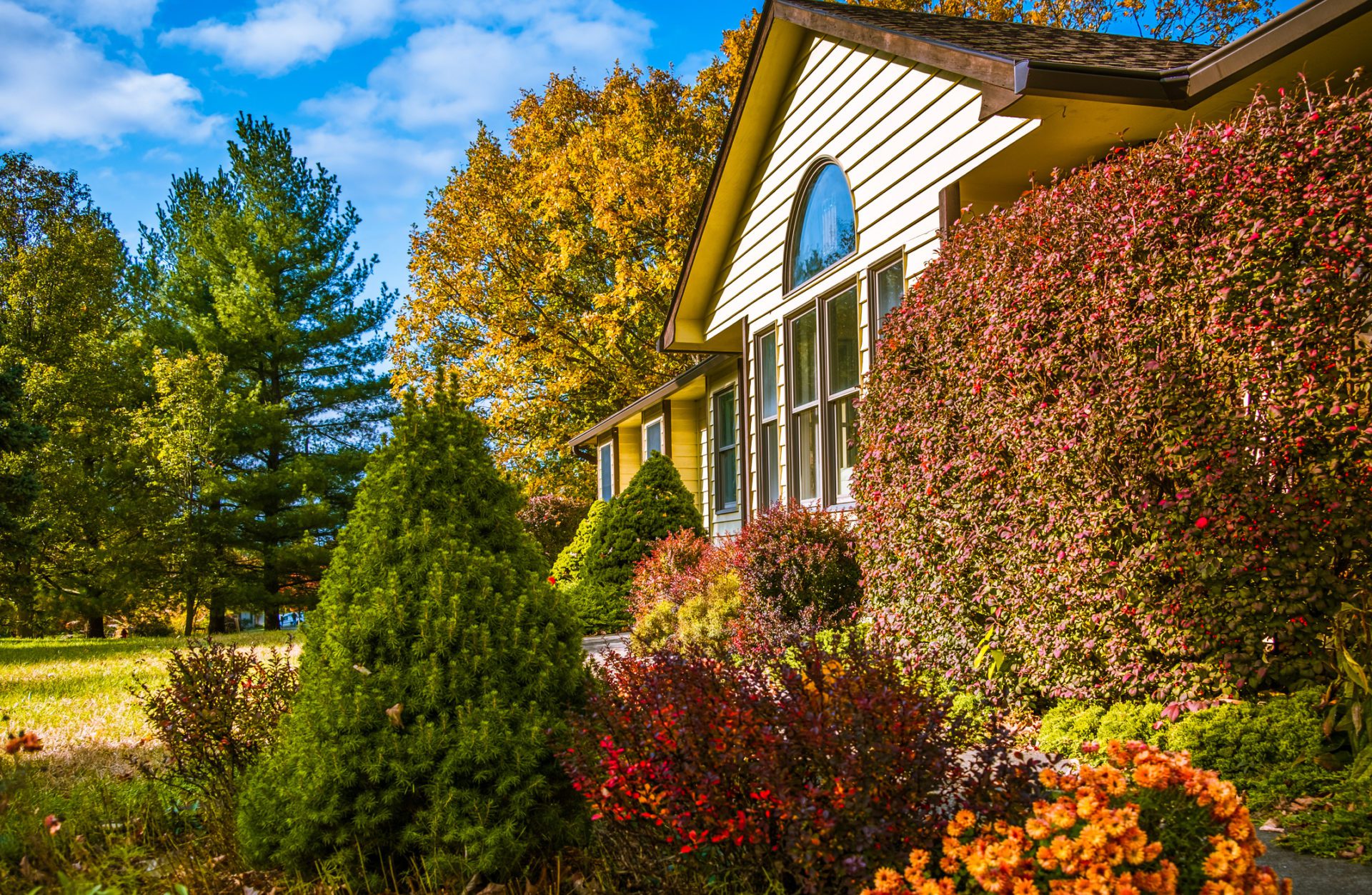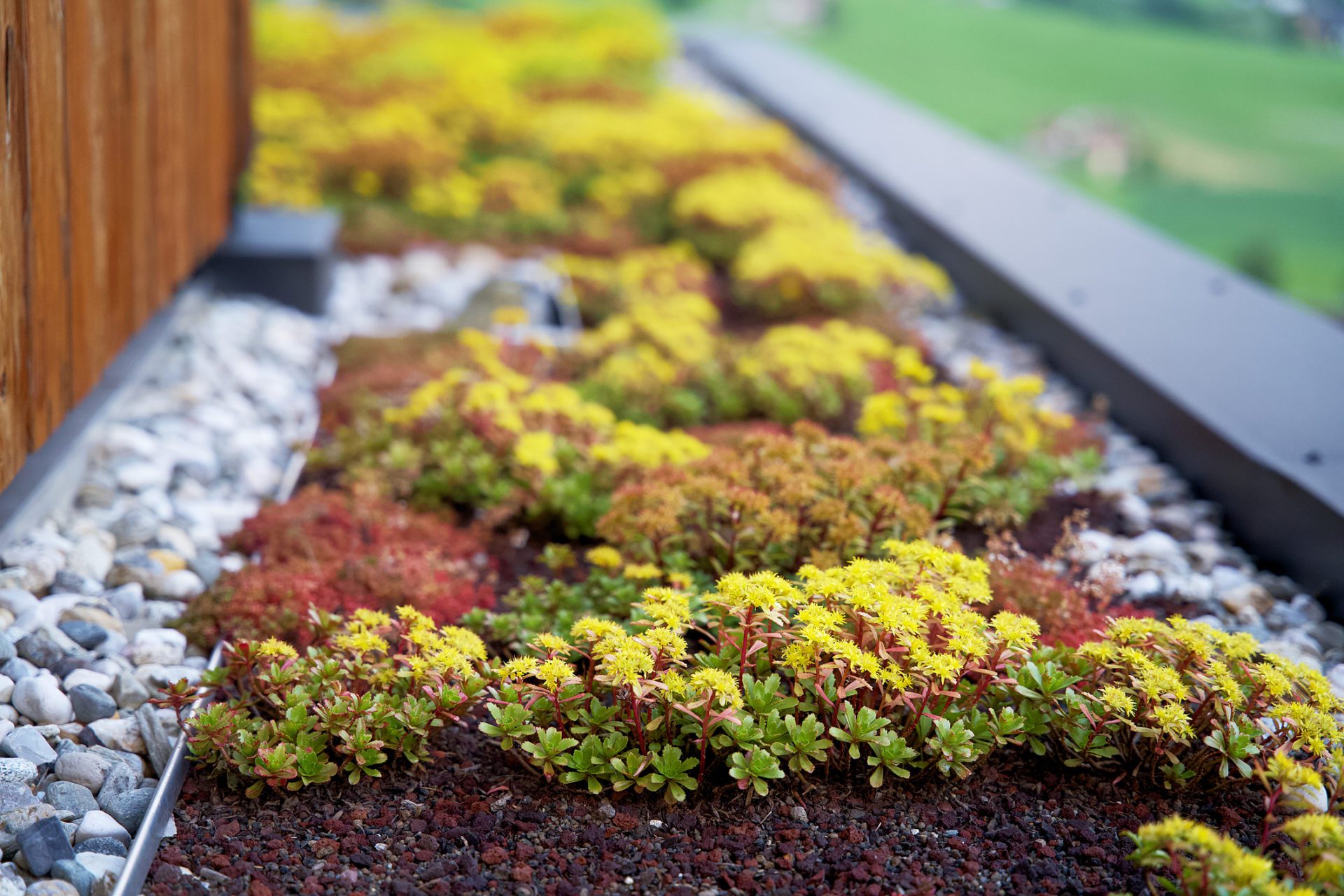Landscaping in Fall vs Spring
Landscaping in Fall vs Spring
Have you ever looked at your yard and thought it could use a little something extra? Maybe you have a beautiful space, but the hardscaping (i.e., the non-plant elements like pavers, barriers, etc.) leaves something to be desired.
Or maybe your outdoor space is mostly hardscape, but it looks a little too sterile and you want to enhance it by adding some color and life. Whatever the case may be, if you’re thinking about making changes to your outdoor space, then keep reading!
Let’s take a look at hardscapes, greenscapes, and garden design so you can have a better understanding of what each entails and how they can all work together to create a stunning outdoor space. Then, we’ll explore the best time of year to roll up your sleeves and get to work.

What is Hardscape-All Metro Companies
What is Hardscaping?
Hardscaping refers to the non-plant elements of your design. This includes such things as pavers, retaining walls, sidewalks, patios, decks, pergolas, and more. Essentially, anything that is NOT alive is considered part of the hardscape. A hardscape can serve both functional and aesthetic purposes. For example, retaining walls can help prevent soil erosion while also adding visual interest to your landscape. Pavers can provide a durable surface for foot traffic while offering various colors and patterns to choose from. When done right, this type of landscape design can elevate the look of your property and make it more enjoyable to spend time outdoors.

What is greenscaping? – All Metro Companies
Next Up: Greenscaping
Greenscaping refers to the plant elements of your landscape. This includes such things as trees, shrubs, flowers, gardens, lawns, etc. In other words, anything that is alive is considered part of the greenscape. Like hardscapes, greenscapes serve both functional and aesthetic purposes. Installing drought-tolerant plants can save you money on your water bill while also adding beauty to your landscape. Additionally, planting trees can provide much-needed shade on hot summer days while increasing the value of your property. When done correctly, greenscapes can make your property inviting while adding curb appeal.

Are you considering garden design – All Metro Companies
Considering Garden Design?
Garden design encompasses elements of landscape design and brings together the above to form a cohesive aesthetic. A well-designed space takes into account the layout of your property, existing features (e.g., house foundation), utility lines (e.g., gas or electrical), sun/shade patterns throughout the day (e.g., north-facing vs south-facing), drainage issues (e.g., slope of the land), and more. The goal: create an outdoor space that is beautiful AND functional.

Landscaping in fall versus in spring- All Metro Companies
Fall vs. Spring Landscaping
Now that you have a few ideas as to how you can beautify your garden or landscape, you may be contemplating when the best time is to start working on your upgrades.
Is it better to wait until spring when everything is starting to bloom? Or, is it better to take advantage of the cooler temperatures and start in fall?
Pros & Cons of Outdoor Landscaping in Fall vs. Spring
Below are some pros and cons of performing outdoor landscaping work in the fall versus doing it in the spring. Let’s get started!
The Pros
PRO: Cooler Temperatures are More Comfortable for Working Outside
Let’s face it, working outside in the heat of summer is not fun. One of the biggest advantages of landscaping in the fall is the weather. Typically, it can be more cooperative. It also helps you to avoid heat exhaustion and dehydration since the days are cooler.
PRO: Less Rainfall
In many parts of the country, spring brings a lot of rain and mud. This can make it difficult to complete landscaping. However, in the fall, you’ll likely have several weeks of dry weather to complete work. This can make it easier for you or your landscaper to work without having to deal with difficult conditions.
PRO: You Can Prepare Your Lawn for Winter
Doing extra work on your lawn in autumn can help it stay healthy and give it a head-start come springtime. For example, fertilizing your lawn one last time and overseeding any thinly growing areas can prevent weed growth from taking over in spring. Don’t forget to rake up any dead leaves as they can damage grass if left over winter. By taking these steps you can have a beautiful lawn with little effort the following year!
PRO: Better Conditions to Establish Plant Roots
Another advantage of fall landscaping is that your new plants will have a better chance of establishing themselves. Planting perennials in fall gives them time to get established without the threat of hot weather and lack of water killing them. However, you must make sure to finish planting before the ground freezes. Otherwise, frost will kill the plants.
PRO: Lower Prices
While fall brings cooler temperatures and less rainfall, another benefit of fall landscaping is it’s generally cheaper. This is because demand is lower during this time of year, and discounts may be available on labor or materials. This makes fall an ideal time to do major projects that have been put off.
PRO: Fewer Allergies
For many people, allergies are at their worst in spring due to pollen from flowers and trees. Fall might be the perfect time to start landscaping if you have allergies. This is because pollen levels are lower. Regardless, don’t forget to check allergy levels before heading outside for your project.

Dealing with leaves in the fall is challenging_All Metro Companies
The Cons
CON: You May Have a More Limited Plant Selection in The Fall
Waiting until fall to start your project may result in a more limited plant selection. Many nurseries and garden centers close down during cold months and stock fewer plants in preparation for winter. This means that if you have your heart set on a certain type of plant, you may not be able to find it come autumn. Conversely, there are also many types of plants that do better when planted in cooler weather. A good step to take is to ask your local nursery what their recommendation is for planting in autumn.
CON: Dealing with Leaves
With fall comes the likelihood of dealing with leaves. Depending on the type of plants you’re using, this may not be a big deal. However, if you’re using a more delicate plant then this is something you’ll need to take into consideration. Look for ways to recycle leaves and use them to your yard’s advantage.

Ready to get started with your next landscaping project? – All Metro Companies
Ready to Get Started?
Whether you’re starting from scratch or making changes to an existing landscape, understanding of hardscapes, greenscapes, and garden design. Understanding each of these allows you to set realistic expectations for your project and create an outdoor space you’re sure to love year-round.
Then, when deciding what time of year to begin your upgrades, weigh out all of the pros and cons specific to your situation. From considering types of plants to use to how much time and effort you want to put into each part of your project – considering any of the above will help set your yard up for success the following year.
If you’re still wondering if landscaping in better in the spring vs. fall, when all else fails, call the professionals. Here at All Metro Service Companies, we offer a full suite of landscape design, installation and maintenance services that allow us to work with homeowners and commercial clients alike. Contact us today for a free consultation.
Looking for more information?
Call us today at 763-789-4788 to receive a free estimate on any of our property services.
Free Estimates
on all Services
Use the form below to request a free estimate on any of our services.






